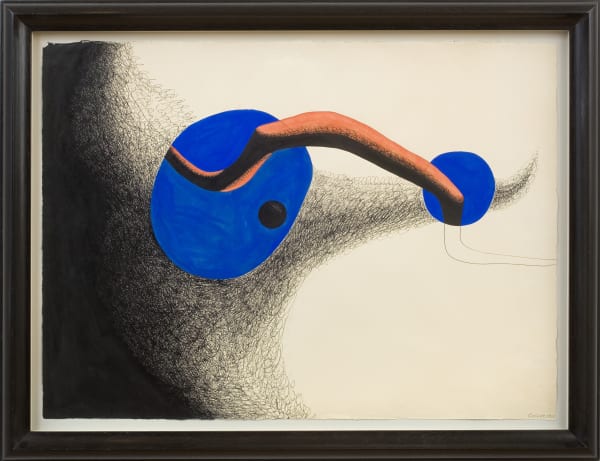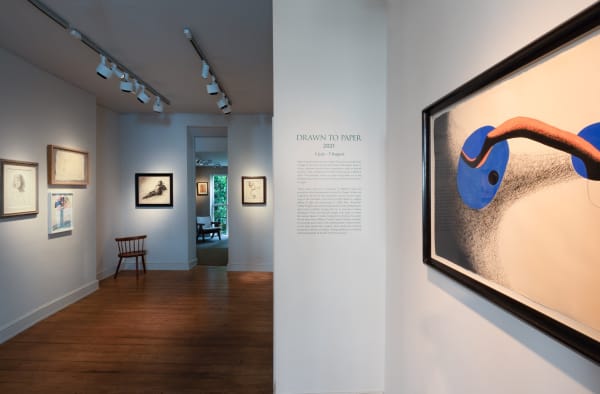Drawn to Paper: Calder to Scott
Paper is easily and variously marked. Charcoal and chalk scuff, smudge or slice; pen and ink dash, hatch and stipple; areas of colour shimmer in pastel, glow in gouache or wash in thinned oil paint. Each combination of these media serves a different need. The drawings, works on paper and graphic art in this display showed the many reasons why artists have been drawn to paper.
These works mapped out a trajectory of different styles and practices in the long twentieth century. For Degas, Sickert and Vuillard at the end of the nineteenth century and the beginning of the twentieth, charcoal and chalk helped to suggest effects of light and movement. In 1930s Paris, Alexander Calder forged a new world of abstraction in saturated gouache and cosmic scribbles of pen and ink. In post-war London, Auerbach, Freud and Kossoff sought new ways to create the human figure in media ranging from charcoal to pastel. Most recently, in the early twenty-first century, Jenny Saville has revisited Leonardo’s brand of disegno, finding significance in layered charcoal drawings of herself and her young son.






















